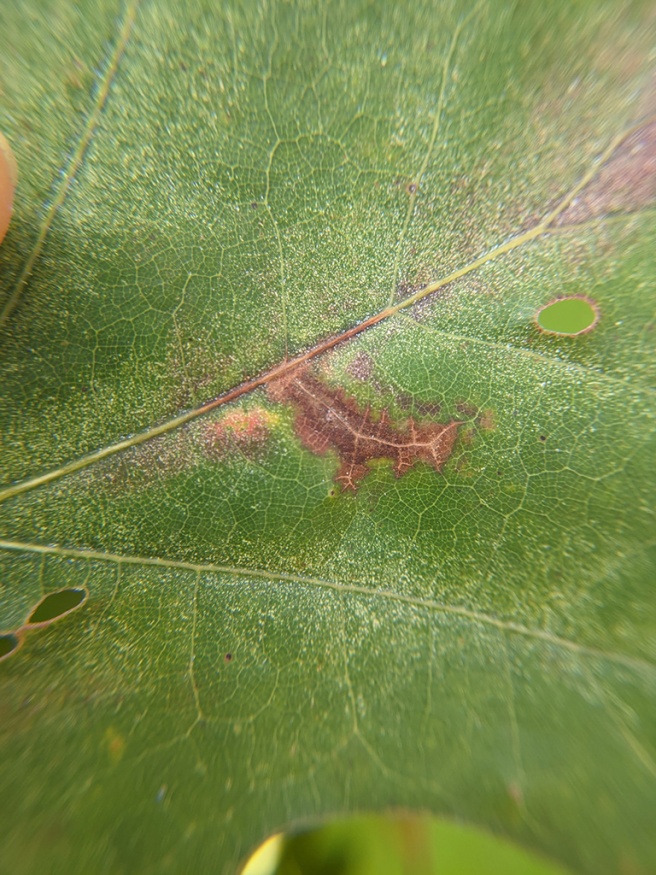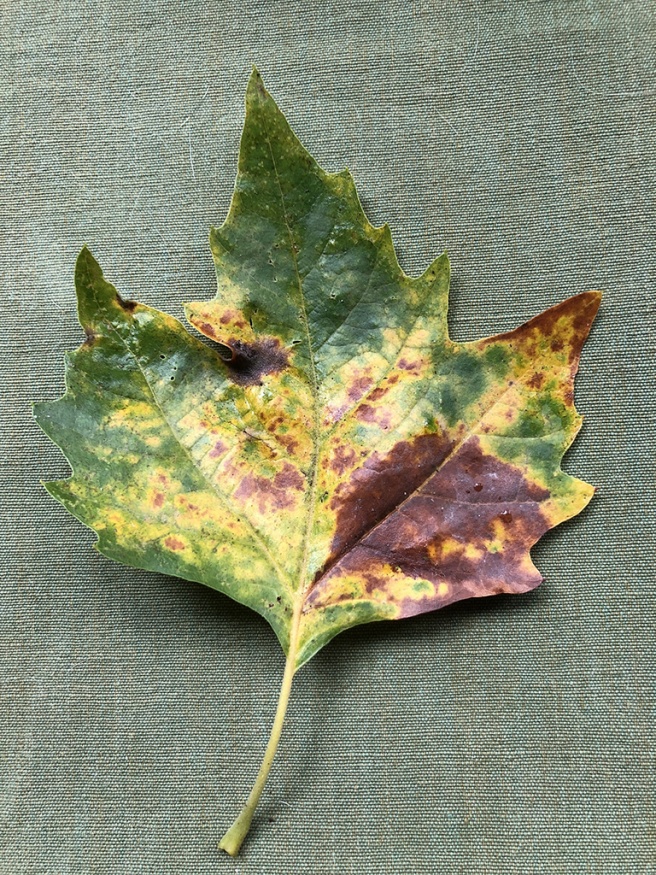Anthracnose In Trees

Anthracnose is a generalized name for a common foliar disease in trees. It's caused by several closely related fungus where each is specific to the type of tree is infects. Anthracnose mainly affects new growth including leaves, buds, and sometimes stems. It's not known to completely kill tress as most trees can leaf out again in the same season. Some trees are more susceptible to the disease than others. While Oak, dogwood, ash, and sycamore can have severe cases of anthracnose; hickory, linden, willow, birch, maple, and walnut can also less severely.

Symptoms
Anthracnose usually more frequent and severe on lower branches where humidity is highest. Brown to black blotches, spots, or irregular shapes usually appear on and around leaf veins. Its appearance can closely resemble sun scorch. The damage occurs at or near the growing tips, and leaves can become distorted as a result of abnormal growth expansion. Young leaves may die and fall off. Cankers on stems are a possibility on some cases such as sycamore. Over the years, disfigured branch growth can happen since the disease causes branch tips to die, allowing side shoots to dominate.
How it works
The fungus resides in infected leaves and branches, either fallen or present on the tree. In the spring, the fungus is activated during persistent cool wet conditions, releasing spores carried by rain or air currents to leaves and branches. New spores are then created, infecting more foliage and spreading again throughout the growing season. Often trees attacked in spring are able to survive and re-leaf in the summer.
Prevention and treatment- Use good sanitation practices
- clean up fallen leaves and debris
- Prune away infected, dead, and dying branches
- Promote good air circulation and avoid overhead irrigation
Spraying with fungicides may only be effective if caught early and full coverage is applied. Good cultural practice such as sanitation, watering and mulching when needed is the most recommended choice for prevention and treatment.
References
Iowa State University Extension and Outreach. (n.d.). Anthracnose on shade trees. Retrieved from https://hortnews.extension.iastate.edu/anthracnose-shade-trees-0
Missouri Botanical Garden. (n.d.). Anthracnose of Trees. Retrieved from https://www.missouribotanicalgarden.org/gardens-gardening/your-garden/help-for-the-home-gardener/advice-tips-resources/pests-and-problems/diseases/anthracnose/anthracnose-of-trees.aspx
The Morton Arboretum. (n.d.). Anthracnose of shade trees. Retrieved from https://www.mortonarb.org/trees-plants/tree-and-plant-advice/help-diseases/anthracnose-shade-trees
University of Illinois Extension. (n.d.). Fungal Disease Anthracnose [Trees and Shrubs]. Retrieved from https://web.extension.illinois.edu/hortanswers/detailproblem.cfm?PathogenID=5